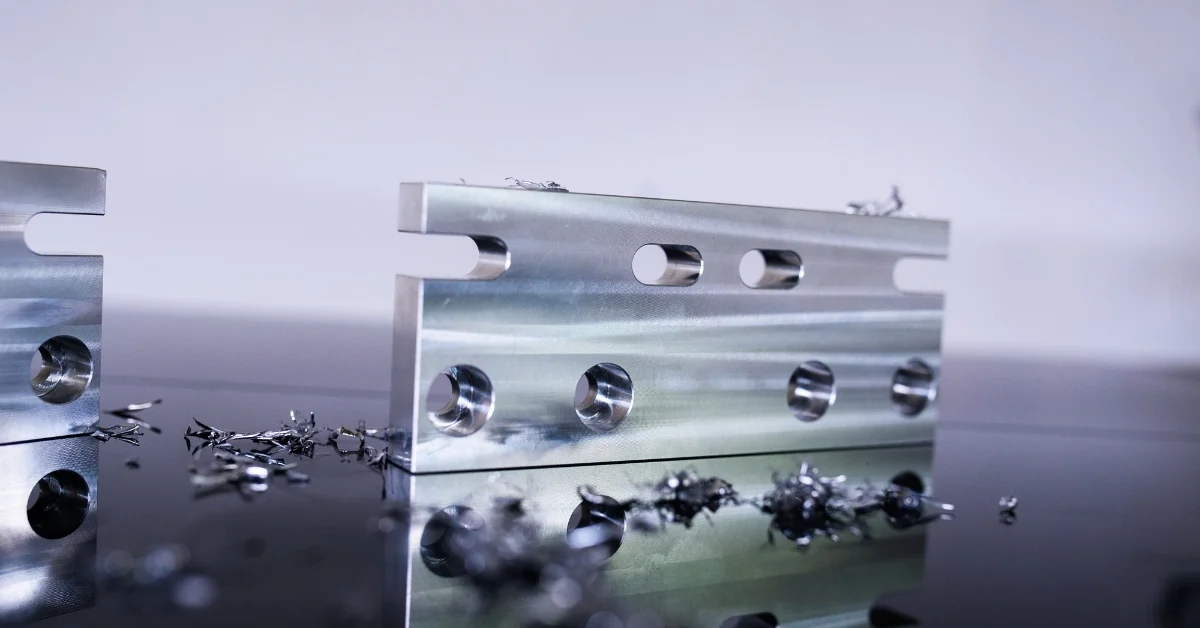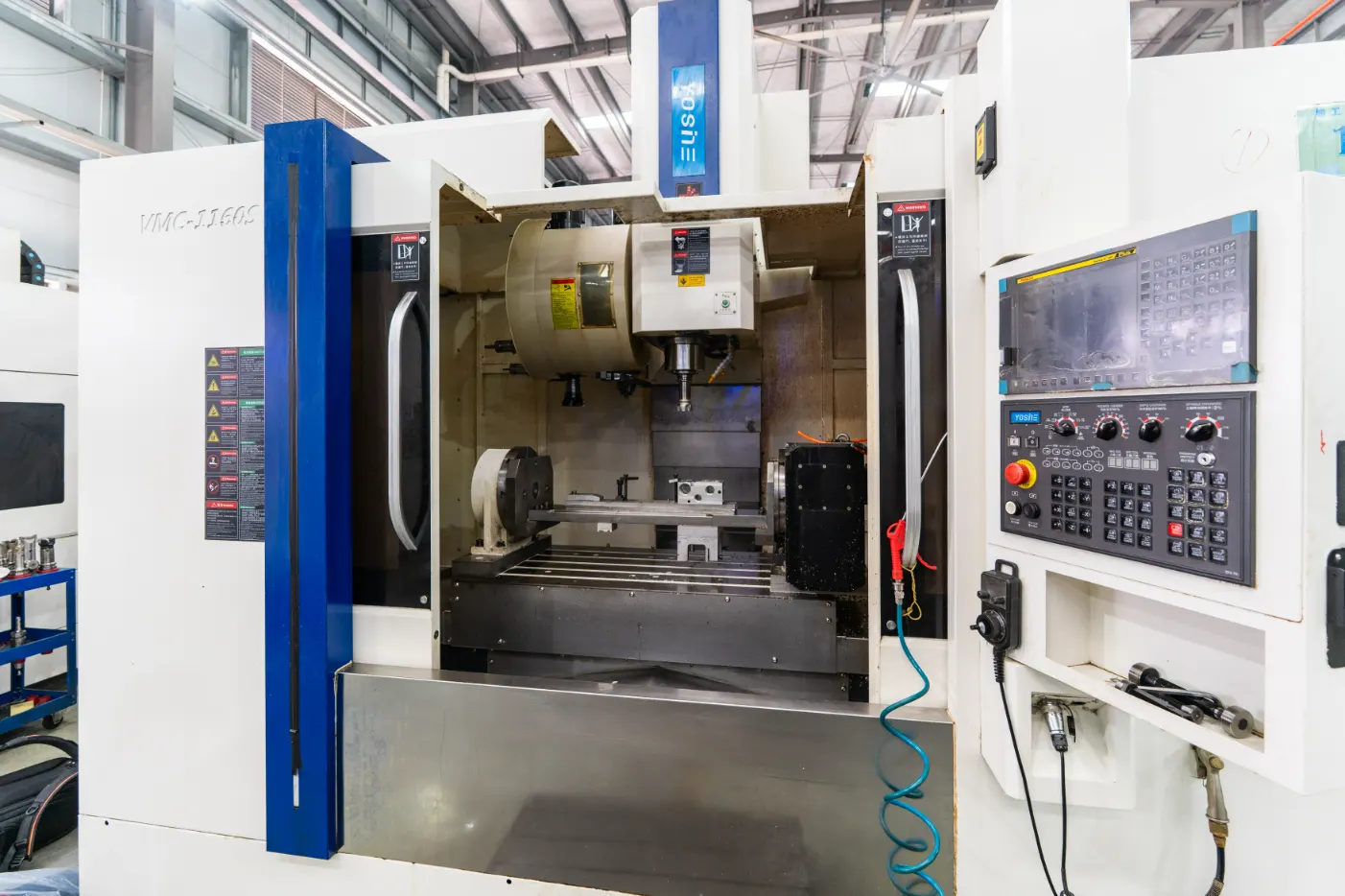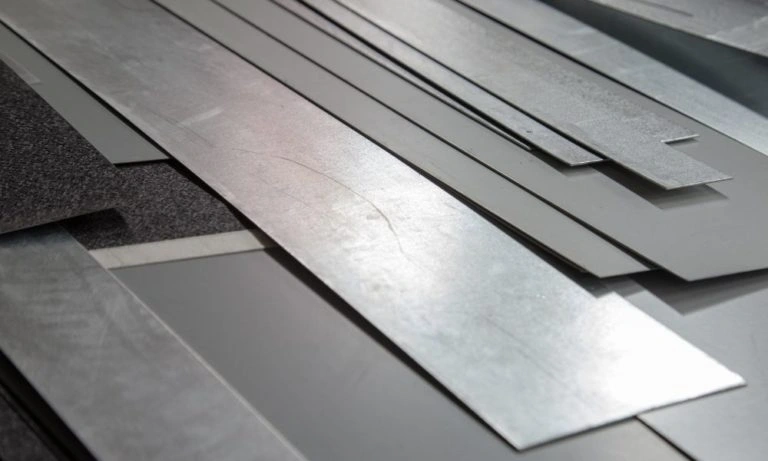ما هو الصب بالقالب: العملية والتطبيقات والمواد
موت صب هي عملية صب المعادن بدقة والتي تتضمن إجبار المعدن المنصهر تحت ضغط مرتفع على الدخول إلى تجويف القالب. تتميز هذه الطريقة بسرعتها والجودة العالية للمنتجات النهائية.
تعود أصول الصب بالقالب إلى منتصف القرن التاسع عشر، حيث استُخدم في البداية للطباعة، ولكن سرعان ما تكيف مع صناعة الأجزاء المعدنية المعقدة. واليوم، أصبح الصب بالقالب جزءًا لا يتجزأ من الصناعات مثل صناعة السيارات والفضاء والإلكترونيات، وذلك بفضل كفاءته وقدرته على إنتاج كميات كبيرة من الأشكال المعقدة ذات التفاصيل الدقيقة.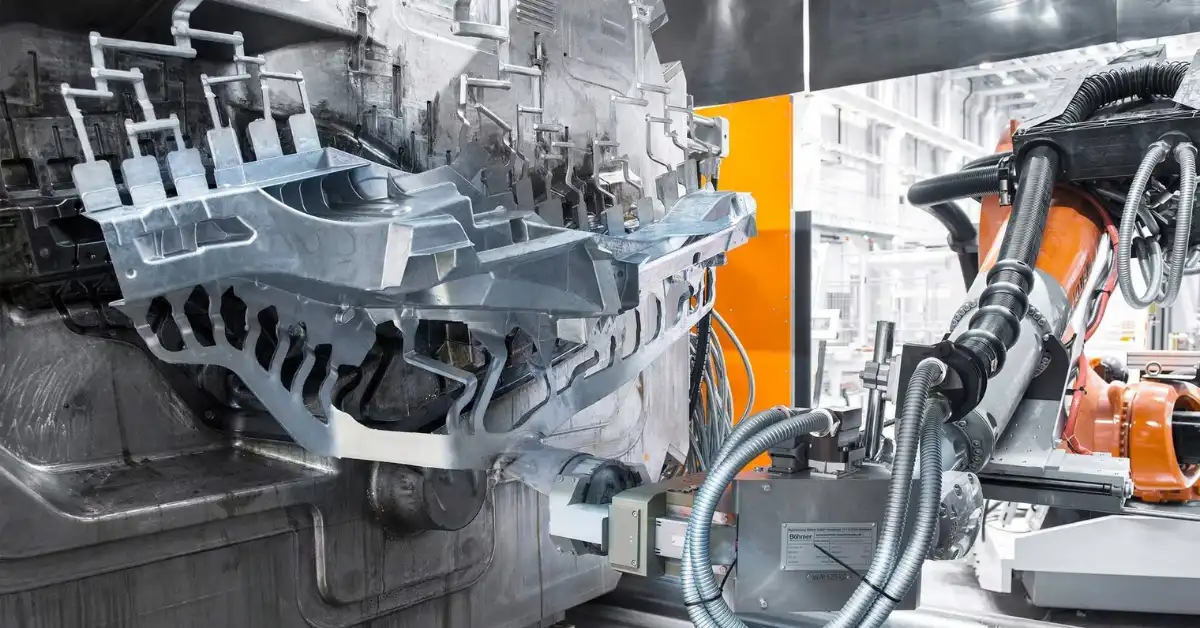
بالمقارنة مع طرق تشكيل المعادن الأخرى، تتميز عملية الصب بالقالب بقدرتها الاستثنائية على تحقيق تحمّلات ضيقة وأسطح أكثر سلاسة دون الحاجة إلى تشغيل ثانوي. تتميز عملية الصب بالقالب تحت الضغط العالي وصب الألومنيوم بشكل خاص بدورها في تصنيع مكونات متينة وخفيفة الوزن، مما يوفر وفورات كبيرة في التكلفة والمواد مقارنة بتقنيات مثل التشكيل بالطرق والصب بالرمل.
من خلال الاستفادة من صب الألومنيوم وغيره من السبائك، يمكن للمصنعين تلبية معايير الأداء والقوة المحددة، مما يجعل صب الألومنيوم حجر الزاوية في التصنيع الحديث.
عملية الصب بالقالب
الصب بالقالب هو عملية صب ديناميكية حيث يتم حقن المعدن المنصهر تحت ضغط مرتفع في قالب مصمم بدقة، يُعرف عادةً باسم القالب. تبدأ هذه العملية بإعداد المعدن، عادةً سبائك الألومنيوم أو الزنك، والتي يتم صهرها في فرن حتى تصل إلى الحالة السائلة.
بمجرد ذوبان المعدن، يتم حقنه بسرعة في القالب باستخدام مكبس هيدروليكي أو ميكانيكي. يتم الحفاظ على الضغط حتى يتصلب المعدن، مما يؤدي إلى التقاط التفاصيل المعقدة وضمان سلامة البنية. ثم يتم فتح القالب لإخراج الصب ويتم إغلاقه بسرعة للدورة التالية. تسمح هذه الطريقة السريعة بمعدل إنتاج مرتفع للأجزاء المعدنية المعقدة مع تشطيب سطحي ممتاز ودقة أبعاد.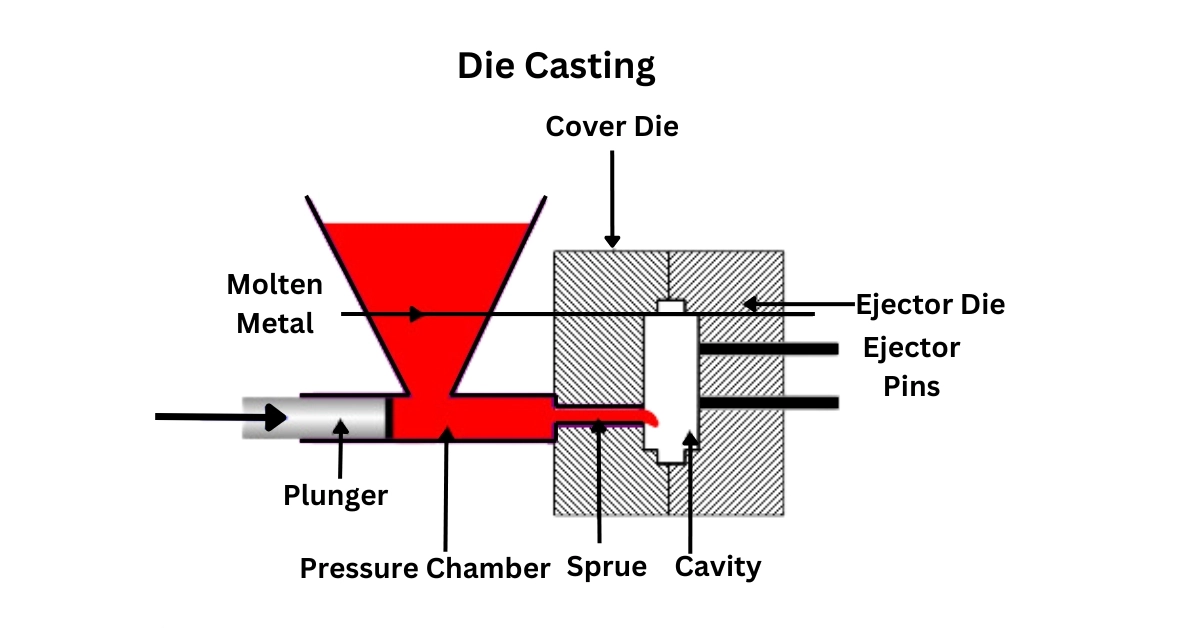
أهمية القوالب في الصب بالقالب
تُعد القوالب أو القوالب ضرورية لعملية الصب بالقالب. صُممت هذه القوالب لتحمل الظروف القاسية، وهي مصنوعة من فولاذ عالي الجودة. تتكون من نصفين يسمحان بهندسة معقدة وإزالة الجزء النهائي بسهولة. غالبًا ما تكون قوالب الصب بالقالب مزودة بميزات معقدة مثل النوى والشرائح لإنشاء تجاويف داخلية وميزات مقطوعة دون الحاجة إلى معالجة إضافية.
إن تصميم القالب لا يؤثر فقط على جودة المنتج النهائي بل يؤثر أيضًا على كفاءة عملية الصب بأكملها. إن تصميم القالب الفعال يقلل من النفايات ويعزز الخصائص الميكانيكية للصب ويمكن أن يقلل بشكل كبير من تكاليف الإنتاج والوقت.
إن عملية صب القوالب، وخاصة صب القوالب تحت الضغط العالي، تستفيد من هذه القوالب لإنتاج أجزاء متينة ومستقرة الأبعاد ذات تحمّلات ضيقة قد لا تحققها عمليات تشغيل المعادن الأخرى بكفاءة. إن إعادة استخدام القوالب في دورات عديدة يجعل عملية صب القوالب مفيدة اقتصاديًا، وخاصة لعمليات الإنتاج واسعة النطاق.
أنواع مختلفة من الصب بالقالب
صب القوالب في الغرفة الساخنة
إن عملية صب القوالب في حجرة ساخنة تعتبر مثالية للمعادن ذات نقاط الانصهار المنخفضة، مثل الزنك والمغنيسيوم وبعض سبائك الألومنيوم منخفضة الحرارة. وتتضمن العملية فرنًا يشكل جزءًا من آلة الصب، مع مكبس يدفع المعدن المنصهر إلى القالب. وتتمثل ميزتها الرئيسية في وقت الدورة السريع، مما يجعلها مناسبة لإنتاج كميات كبيرة من الأجزاء الصغيرة.
صب القوالب في الغرف الباردة
في عملية صب القوالب في غرفة باردة، يتم ضخ المعدن المنصهر في نظام الحقن الخاص بالماكينة لكل جزء، مما يجعله أكثر ملاءمة للمعادن ذات نقاط الانصهار العالية، مثل الألومنيوم والنحاس. تتطلب هذه الطريقة وقتًا أطول ولكنها توفر سلامة هيكلية محسنة من خلال تقليل التفاعل بين المعدن المنصهر ومكونات الماكينة.
صب القوالب تحت ضغط منخفض
غالبًا ما يتم استخدام عملية الصب بالقالب تحت ضغط منخفض للمكونات التي تتطلب جودة معدنية فائقة وتشطيب سطحي جيد. وهي تتضمن حقن المعدن المنصهر ببطء في القالب من الأسفل، باستخدام ضغط متحكم فيه. غالبًا ما يتم اختيار هذه التقنية لصنع عجلات السيارات والأجزاء الأخرى حيث يجب تقليل المسامية إلى أدنى حد.
صب القوالب تحت الضغط العالي
تتضمن عملية الصب بالقالب تحت الضغط العالي حقن المعدن المنصهر في القالب بسرعة عالية وضغط يصل إلى 25000 رطل/بوصة مربعة. وهي الطريقة الأكثر استخدامًا بين طرق الصب بالقالب، والمعروفة بإنتاج أشكال دقيقة ومعقدة ذات تحمّلات ضيقة وتشطيبات سطحية عالية الجودة، وعادةً ما تستخدم للأجزاء الصغيرة والمتوسطة الحجم.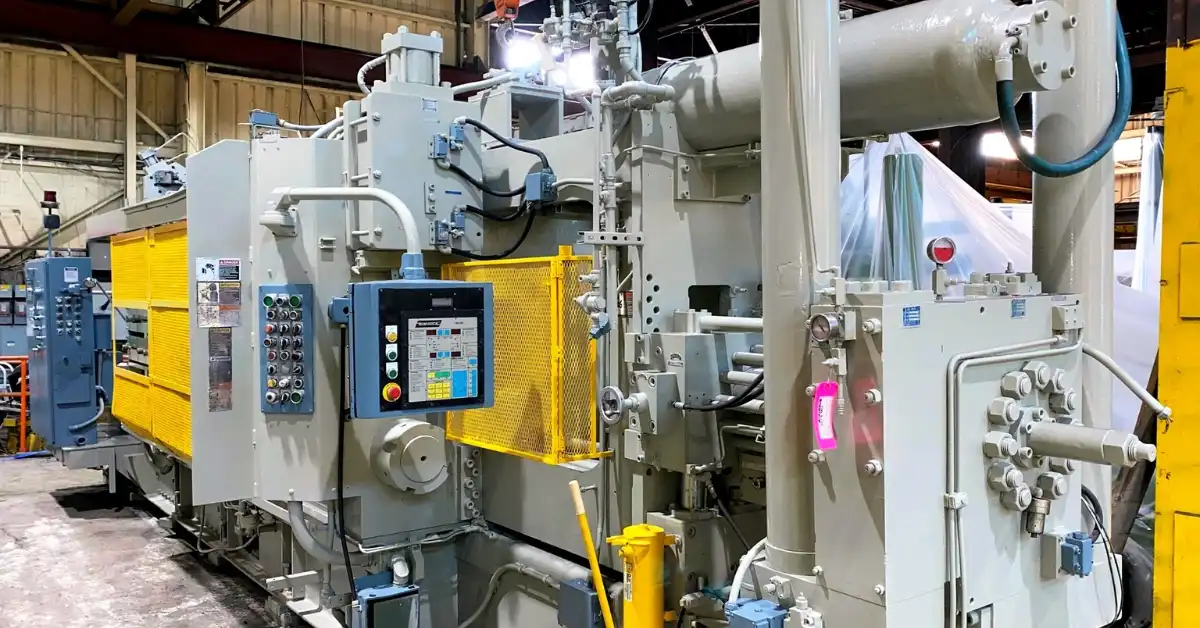
صب الفراغ بالقالب
يعمل صب القوالب تحت الفراغ على تحسين مبادئ صب القوالب تحت الضغط العالي من خلال إزالة الهواء من حجرة القالب. تعمل هذه العملية على تقليل المسامية وتسمح بإنتاج أجزاء ذات سلامة أعلى وخصائص ميكانيكية وسطح أنظف، مما يجعلها مثالية للتطبيقات الأكثر تطلبًا.
صب القوالب بالضغط
يجمع صب القوالب بالضغط بين ميزات التشكيل بالطرق والصب من خلال تطبيق الضغط طوال فترة تصلب المعدن. هذه الطريقة مثالية للمكونات التي تتطلب كثافة عالية بدون مسامية غازية، مما يوفر خصائص ميكانيكية محسنة مقارنة بطرق الصب التقليدية.
صب القوالب شبه الصلبة
تتضمن عملية صب القوالب شبه الصلبة صب سبائك منصهرة جزئيًا فقط إلى حالة طينية. تسمح هذه الحالة بتحكم أفضل في التدفق إلى القالب، مما يقلل من المسامية ويسمح بأجزاء أقوى وأكثر مقاومة للحرارة.
المواد المستخدمة في الصب بالقالب
تستخدم عملية الصب بالقالب مجموعة متنوعة من المعادن، يتم اختيار كل منها لخصائصها المحددة وملاءمتها لمتطلبات التصنيع المختلفة.
الألومنيوم وسبائكه هي واحدة من أكثر المواد شعبية في الصب بالقالب. طبيعتها خفيفة الوزن، إلى جانب خصائصها الميكانيكية الممتازة ومقاومتها للتآكل، تجعلها مثالية لتطبيقات السيارات والطيران والإلكترونيات الاستهلاكية. تشمل المواد الأخرى المستخدمة بشكل شائع الزنك، المعروف بنقطة انصهاره المنخفضة وسهولة صبه، والمغنيسيوم، الذي يعتبر أخف المعادن الهيكلية المتاحة، ويوفر قوة مماثلة للألمنيوم مع وزن أخف.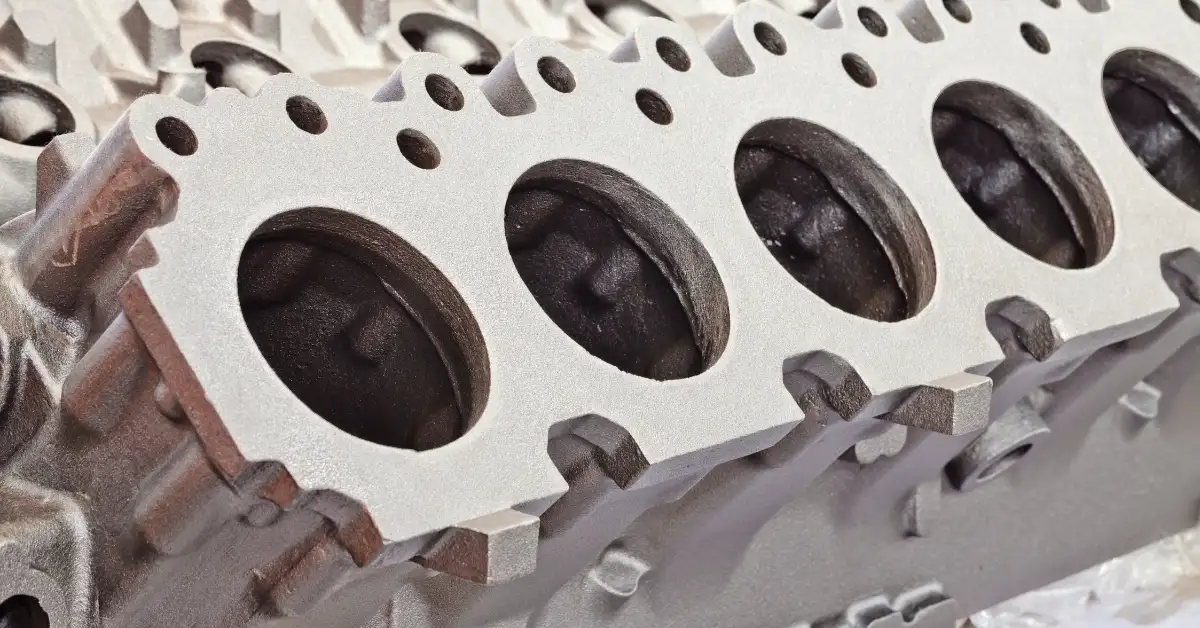
يتطور مجال الصب بالقالب باستمرار مع تطوير مواد وتقنيات جديدة. وتشمل الابتكارات الحديثة استخدام التيتانيوم والسيليكون في الصب بالقالب، وهي مواد توفر خصائص فريدة مثل القوة العالية أو الوزن المنخفض أو مقاومة أفضل للتآكل. كما يستكشف الباحثون أيضًا سبائك معدنية شبه صلبة توفر قوة محسنة ومسامية أقل مقارنة بطرق الصب السائل التقليدية.
تقدم كل مادة مستخدمة في عملية الصب بالقالب مزايا وتحديات مميزة، تؤثر على كل شيء بدءًا من سرعة الإنتاج وحتى أداء القطعة النهائية. يعد اختيار المادة أمرًا بالغ الأهمية ويجب أن يتوافق مع المتطلبات المحددة للتطبيق المقصود لضمان الأداء الأمثل والفعالية من حيث التكلفة.
تطبيقات الصب بالقالب
الصب بالقالب هو عملية تصنيع محورية تستخدم في جميع أنحاء السياراتتُستخدم عملية الصب بالقالب في صناعات الطيران والفضاء والإلكترونيات الاستهلاكية نظرًا لقدرتها على إنتاج مكونات دقيقة ومتينة. وفي قطاع السيارات، يعد الصب بالقالب تحت الضغط العالي ضروريًا لإنشاء أجزاء خفيفة الوزن وقوية مثل كتل المحرك وعلبة التروس، مما يعزز أداء السيارة وكفاءة الوقود. تعتمد صناعة الطيران والفضاء على الصب بالقالب من الألومنيوم للمكونات الحيوية التي تتطلب نسب عالية من القوة إلى الوزن، مثل أجزاء هياكل الطائرات.
كما تحتضن الأسواق الناشئة عملية الصب بالقالب نظرًا لدقتها وتنوعها، حيث تتراوح التطبيقات من إطارات الألواح الشمسية في مجال الطاقة المتجددة إلى الأدوات الجراحية المعقدة في التكنولوجيا الطبية. وتعمل التطورات في مواد وتقنيات الصب بالقالب، مثل الصب بالقالب شبه الصلب والصب بسبائك الألومنيوم، على توسيع نطاق استخدامها في مجالات عالية الأداء تتطلب خصائص متخصصة.
مزايا الصب بالقالب
تتميز عملية الصب بالقالب بفعاليتها من حيث التكلفة والكفاءة، مما يجعلها مناسبة بشكل خاص للإنتاج بكميات كبيرة. تسمح هذه العملية بتصنيع أجزاء معقدة مع الحد الأدنى من الحاجة إلى التشغيل الإضافي، مما يقلل بشكل كبير من تكاليف الوحدة. يعزز الصب بالقالب من الألومنيوم هذه الفوائد؛ فعند مقارنته بالألومنيوم المصبوب التقليدي، يُظهر الألومنيوم المصبوب بالقالب خصائص ميكانيكية متفوقة بسبب البنية الدقيقة الدقيقة التي يتم تحقيقها من خلال التبريد السريع في القالب. يؤدي هذا إلى أجزاء أقوى وأخف وزناً ولديها مقاومة أكبر للانحناء والتعب الحراري.
علاوة على ذلك، تسمح تعدد استخدامات عملية الصب بالقالب بدرجة عالية من التخصيص. يمكن لعملية الصب بالقالب للمعادن أن تستوعب التصميمات المعقدة التي تتضمن تفاصيل معقدة ووظائف متكاملة. تمكن هذه القدرة الشركات المصنعة من تصميم الأجزاء خصيصًا لتلبية احتياجاتها، وتقديم حلول وظيفية وجمالية، وبالتالي معالجة مجموعة واسعة من التطبيقات الصناعية بشكل فعال.
التحديات والاعتبارات
إن عملية صب المعادن بالقالب عملية فعّالة ولكنها ليست خالية من التحديات التي تؤثر على الجودة والامتثال. وتشمل القضايا الرئيسية إدارة التحكم في درجة الحرارة، واستقرار الضغط، وسرعة حقن المعدن المنصهر، والتي يمكن أن تؤدي إلى عيوب مثل المسامية، والإغلاق البارد، والتشغيل الخاطئ. تتطلب هذه التحديات التحكم الدقيق والتعديلات المستمرة في عملية صب المعادن بالقالب. بالإضافة إلى ذلك، فإن الاستدامة البيئية تشكل مصدر قلق، حيث تستهلك عملية صب المعادن بالقالب تقليديًا قدرًا كبيرًا من الطاقة وتنتج نفايات. للتخفيف من التأثيرات البيئية، يعمل المصنعون على تحسين استخدام الطاقة وإعادة تدوير المواد واستخدام مواد التشحيم الصديقة للبيئة. ولمعالجة هذه التحديات التشغيلية، تعتمد مرافق صب المعادن بالقالب بشكل متزايد على التقنيات المتقدمة مثل أنظمة المراقبة في الوقت الفعلي، والضوابط الآلية، والصيانة التنبؤية، إلى جانب التدريب المستمر للموظفين والبحث والتطوير، لتعزيز كفاءة العملية والاستدامة.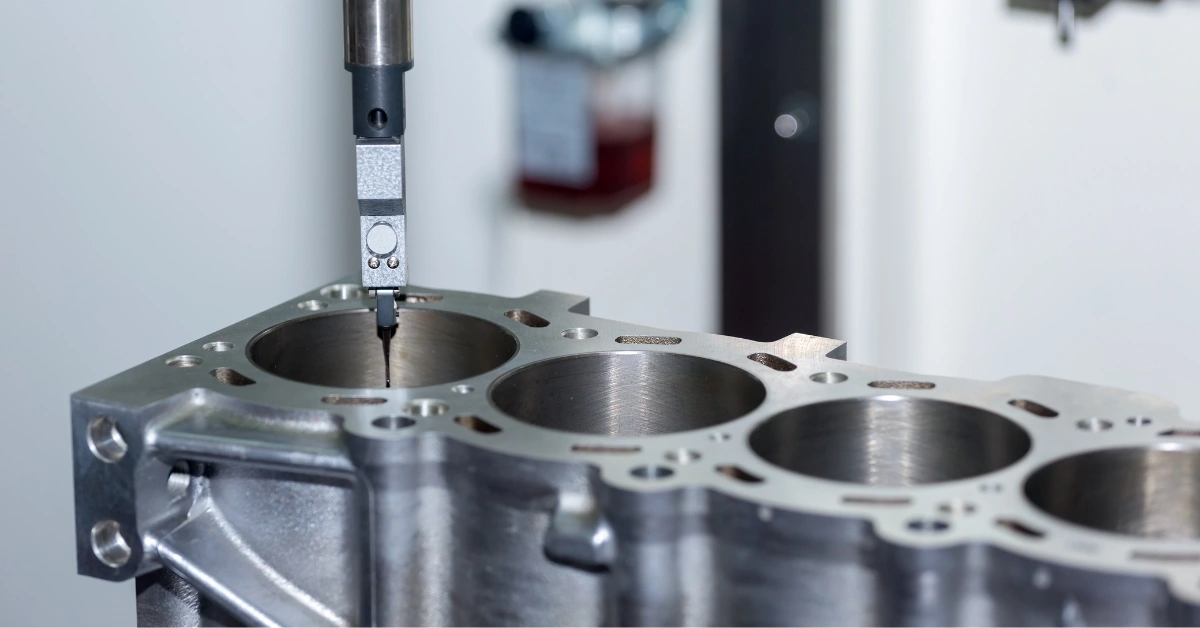
ضمان الجودة والامتثال في صب القوالب
تعتمد عملية الصب بالقالب على اختيار سبائك الصب الصحيحة والالتزام بمعايير صارمة خاصة بالصناعة لضمان الأداء العالي ومتانة المنتجات. يتم اختيار سبائك الألومنيوم، المشهورة بنسبة قوتها إلى وزنها، إلى جانب سبائك الزنك والمغنيسيوم، بناءً على خصائصها المحددة مثل مقاومة التآكل ونقاط الانصهار. يعد ضمان الجودة في خدمات الصب أمرًا بالغ الأهمية، حيث يتضمن التحكم الدقيق في عملية الصب بالقالب والاختبار الصارم لتلبية المعايير الدقيقة لصناعة السيارات والفضاء وغيرها من الصناعات. تعمل التقنيات مثل الصب بالقالب تحت الضغط والصب بالقالب تحت الفراغ على تقليل العيوب، مما يضمن أداء المكونات بشكل موثوق تحت ضغوط تشغيلية مختلفة.
خاتمة
تظل عملية صب المعادن بالقالب ضرورية في التصنيع لدقتها وكفاءتها، وتلبي متطلبات الصناعة من خلال عمليات صب المعادن المتقدمة. وتسلط الاتجاهات المستقبلية الضوء على التحول نحو الاستدامة والتقنيات الأكثر ذكاءً في آلات صب المعادن بالقالب، مما يعد بمزيد من الدقة وتقليل التأثير البيئي. ومع تقدم هذه الابتكارات، ستستمر عملية صب المعادن بالقالب في التأثير على قطاعات متنوعة مثل صناعة السيارات والفضاء، مما يؤكد دورها المحوري في التصنيع الحديث.

